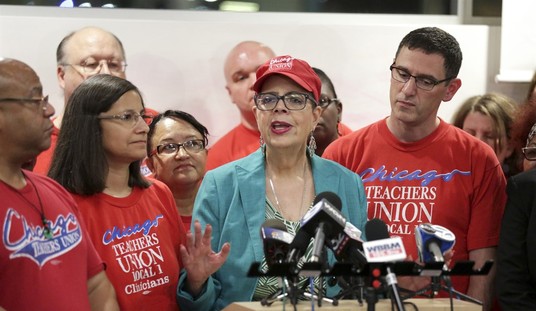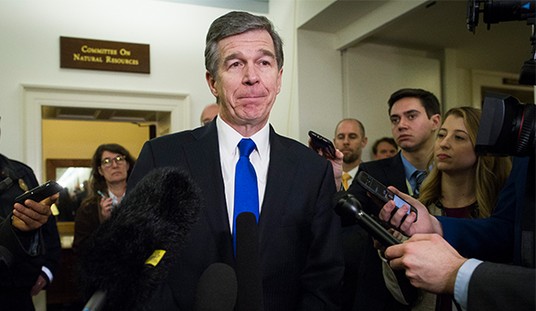Every year, April 15 is tax day. The morning news shows feature last minute tax tips and other tax-related information. A new poll was discussed. When asked: “Thinking about paying taxes, which one of the following bothers you the most?” Surprisingly, “What you pay” received the lowest response, while the “Way the government spends taxes” was the highest. “Feeling that some don’t pay fair share” was near the top and “Complexity of system and forms” was near the bottom.” So people understand that it takes money to run the government and generally don’t object to paying their taxes. It is what the government does with that money that frustrates us.
When asked about the way government spends taxes, responders were likely thinking of the green-energy crony-corruption spending on flawed ventures like Solyndra and the, now, fifty-plus other green-energy embarrassments that received taxpayer dollars as a result of President Obama’s 2009 Stimulus Bill (as well as other green-energy funds) that poured nearly $100 billion into the pet projects of his donors.
Solyndra filed for bankruptcy in September 2011. It was just the bellwether; the first of many to come.
A year later Christine Lakatos and I profiled nearly 20 green-energy stimulus-funded companies that had gone bankrupt. The next week, we highlighted the other bookend: “companies/projects that received funding from various loan guarantee programs (LGP), grants, and tax incentives. These are projects that are still functioning, but are facing difficulties.” One of those troubled companies was A123 Systems. One week after our report, A123 filed for bankruptcy. Nearly two months later, A123 was purchased by a large Chinese auto parts makerthat has renamed the lithium-ion battery company B456. (Note: A123/B456’s biggest customer is another company on our troubled list: Fisker Automotive—manufacturer of the $100,000+ electric sports car made in Finland—is now facing bankruptcy itself after efforts to find a Chinese investor “stalled.”)
Wait. In his 2008 campaign, didn’t Obama promise to “create five million new energy jobs over the next decade––jobs that pay well and can't be outsourced”? But our tax-payer dollars created jobs in Finland and have benefitted a Chinese company—Obamanomics outsourced. No wonder the “way the government spends taxes” tops the list. And most have no idea that the Obama administration is responsible for steering billions of our tax dollars from the stimulus and other clean energy programs to foreign-owned entities, of which big chunk was doled out in the form of free cash via the 1603 stimulus grant program.
Recommended
But there’s more—new news the poll respondents probably didn’t even know about.
One day after the poll was taken, CNN Money reports: “China's Suntech Power has put its largest subsidiary into bankruptcy.” What they don’t mention is that China's Suntech Power benefitted from Obama’s 2009 Stimulus Bill—receiving a $2.1 million credit from the Energy Department’s stimulus-funded Advanced Energy Manufacturing (48C) Tax Credit. (Suntech was included in our 2012 “troubled” list.) In her blog, The Green Corruption Files, Lakatos states: “according to the Heritage Foundation, in November 2012, Suntech shed some employees, claiming that it was the ‘U.S. International Trade Commission’s 35.95% tariff on Chinese solar panels that was partially responsible for the 50 impending layoffs at its Arizona production facilities.’” Suntech was even blamed for the Solyndra debacle. In December 2011, The Pittsburgh Tribune-Review reported: “China's major solar panel companies—whose low-cost products led some American factories to close, helped create the Solyndra controversy, and spawned talk of a trade war—were bankrolled in the United States by the world's largest investment banks.” Those “investment banks” include some the same ones we have profiled in our previous reports that have deep ties to the Obama campaign and administration, and many green-energy projects that received loans, grants, and special tax breaks representing billions in stimulus money.
Suntech has more interconnections. Arizona’s Mesquite Solar Project, which received $337 millionin taxpayer money despite its non-investment grade rating by Fitch, was to be built with Suntech’s solar panels and the power was to be sold to Pacific Gas & Electric—which has strong political presence in Washington, DC, and connections to billions in stimulus funds. California’s PG&E, a company with “an extensive network of former high-ranking employees holding influential positions in government agencies at the federal and state level, has benefitted handsomely from government financing of green energy projects.” The most controversial former PG&E employee to hold an influential government post is Cathy Zoi, a former energy analyst for the company, who we profiled in our report on George Soros.
There is much more that can be found in Lakato’s Suntech report.
Another sparsely reported solar-power embarrassment was covered by Fox News on the same day the aforementioned poll was taken. “SoloPower, which makes thin-film solar panels at a new plant in Portland, OR, opened September 27 with an upbeat ribbon-cutting ceremony. Local and state politicians gushed about the company eventually operating four production lines and creating 450 well-paid green jobs.” After its grand opening just months ago, SoloPower’s power is waning: “The first production line was never completed,” and “in January, the company had a round of layoffs.”
This is not a surprise to those of us who watch the green-energy crony-corruption scandal. SoloPower was one of the worst-rated loans. One month before it received a $197 million loan guarantee to “support the retrofit of an existing building to operate a thin-film solar panel manufacturing facility in Portland, OR,” Standard and Poors (S&P) gave SoloPower a credit rating of CCC+.
On March 29, 2012, U.S. House of Representatives Committee on Oversight and Government Reform released a report titled “The Department of Energy’s Disastrous Management of Loan Guarantee Programs” which states: “S&P predicted that SoloPower will fail to meet its debt obligations.” DOE emails, released on October 31, 2012, reveal that James McCrea, Senior Credit Advisor Loan Programs, called SoloPower “a completely uninspiring project.”
Yet, in addition to the $197 million of US taxpayer money SoloPower was given from the DOE through the 1705 LGP, this European firm also received $40 million from Oregon taxpayers. Then in December 2012, “despite unfulfilled job and production promises and signs the Portland solar panel factory was sliding even further behind,” Oregon officials tripled the “taxpayer’s stake,” said the Oregonian. Business Oregon approved a $20 million tax credit for SoloPower—which SoloPower then exchanged for $13.5 million in cash. After a management shake-up, Fox News reports, SoloPower is “trying to raise money by selling some of its equipment through a third party and is attempting to restructure its $197 million federal loan guarantee.”
With the bad credit rating, the “uninspiring” label, and poor performance, why did SoloPower receive federal, state, and city funding—ultimately paid by the taxpayers? Because as the Oversight Committee report states: “What SoloPower lacked in economic value, it made up for in political connections.”
Suntech and SoloPower are just two recent stories, part of a long list of bankrupt and/or “troubled” politically connected green-energy projects.
When President Obama released his FY2014 budget, it included new spending of nearly $1 billion “to support deployment and long-term development in the clean energy industries.” Renewable Energy World appears gleeful. “It’s been said before and it bears repeating that Obama has done more for solar than any previous US President.” And: “The support of the federal government has led to an explosion in the amount of solar across America.” Do you think?
In contrast, Tom Pyle, President of the American Energy Alliance, pointed out that the budget “represents the administration’s desire to double down on bad energy policy.” And, “calls for fast-track permitting for renewables” while never mentioning the Keystone pipeline. Pyle concludes his comments by saying: the President “hopes that the American people will forget the failures of the past four years, higher gasoline prices, skyrocketing electricity rates, bankrupt renewable firms, and billions in wasted taxpayer money on politically connected industries.”
No wonder the “way the government spends taxes” tops the list of taxpayer’s frustrations. Perhaps if “government’s inability to learn from its mistakes” had been on the list, it would have been the number one choice.
The author of Energy Freedom, Marita Noon serves as the executive director for Energy Makes America Great Inc. and the companion educational organization, the Citizens’ Alliance for Responsible Energy(CARE). Together they work to educate the public and influence policy makers regarding energy, its role in freedom, and the American way of life. Combining energy, news, politics, and, the environment through public events, speaking engagements, and media, the organizations’ combined efforts serve as America’s voice for energy.

























Join the conversation as a VIP Member